Potřebujeme váš souhlas k využití jednotlivých dat, aby se vám mimo jiné mohly ukazovat informace týkající se vašich zájmů. Souhlas udělíte kliknutím na tlačítko „OK“.
ASTM D5335-14
Standard Test Method for Linear Coefficient of Thermal Expansion of Rock Using Bonded Electric Resistance Strain Gauges (Withdrawn 2023)
Automaticky přeložený název:
Standardní zkušební metoda pro lineárním koeficientem teplotní roztažnosti Rock Použití Bonded elektrického odporu tenzometrů
NORMA vydána dne 1.6.2014
Informace o normě:
Označení normy: ASTM D5335-14
Poznámka: NEPLATNÁ
Datum vydání normy: 1.6.2014
Kód zboží: NS-30776
Počet stran: 7
Přibližná hmotnost: 21 g (0.05 liber)
Země: Americká technická norma
Kategorie: Technické normy ASTM
Kategorie - podobné normy:
Zemní práce. Hloubicí práce. Budování základů. Podzemní práce
Anotace textu normy ASTM D5335-14 :
Keywords:
heating tests, rock, strain gauges, temperature, thermal expansion/contraction, thermal properties, ICS Number Code 93.020 (Earth works. Excavations. Foundation construction. Underground works)
Doplňující informace
| Significance and Use | ||||||||||||||||||
|
5.1 Information concerning the thermal expansion characteristics of rocks is important in the design of underground excavation where the temperature of the surrounding rock may be altered. Depending on the restraint conditions, thermal strain may cause thermal stress that may affect the stability of underground excavations. Examples of applications where an understanding of rock thermal strain is important include: nuclear waste repositories, underground power stations, compressed air energy storage facilities, energy foundations, and geothermal energy facilities. 5.2 The coefficient of linear thermal expansion, α, of rock is known to vary as the temperature changes. Rock thermal strain is normally not a linear function of temperature. This test method provides a procedure for continuously monitoring thermal strain as a function of temperature. Therefore, information on how the coefficient of linear thermal expansion changes with temperature is obtained. 5.3 Other methods of measuring the coefficient of linear thermal expansion of rock by averaging the thermal strain of a large specimen over a temperature range of many degrees may result in failure to determine the variation in α of that rock for one or more of the following reasons: 5.3.1 α is not always linear with temperature, 5.3.2 Some rocks are anisotropic having directional characteristics which can vary by more than a factor of two. If anisotropy is expected, specimen with different orientations should be prepared and tested. 5.3.3 α may have a negative value in one direction and, at the same time, a positive value in the others. 5.4 Both wire and foil type strain gauges have been successfully employed to measure the thermal expansion coefficients of rock. These coefficients are frequently very small, being on the order of millionths of a millimetre per millimetre for each degree Celsius. The thermal strain of rocks is about one-tenth that of plastics and one-half or one-quarter that of many metals. Therefore, measurement methods for rocks require greater precision than methods that are routinely used on plastics and metals. Note 4: The quality of the results produced by this standard
is dependent on the competence of the personnel performing it, and
the suitability of the equipment and facilities used. Agencies that
meet the criteria of Practice D3740 are generally considered capable of
competent and objective testing/sampling/inspection/etc. Users of
this standard are cautioned that compliance with Practice
D3740 does not in itself
ensure reliable results. Reliable results depend on many factors;
Practice D3740 provides a
means of evaluating some of those factors.
|
||||||||||||||||||
| 1. Scope | ||||||||||||||||||
|
1.1 This test method covers the laboratory determination of the linear (one-dimensional) coefficient of thermal expansion of rock using bonded electric resistance strain gauges. This test method is intended for evaluation of intact rock cores. Discontinuities in the rock mass, such as joints, inclusions, voids, veins, bedding, and the like can influence the thermal expansion of the rock, and judgment should be used when selecting the specimen to be analyzed in this test method. 1.2 This test method is applicable for unconfined stress states over the temperature range from 20 to 260°C. Note 1: Unconfined tests performed at elevated temperatures
may alter the mineralogy or grain structure of the test specimen.
This alteration may change the physical and thermal properties of
the test specimen.
Note 2: The strain gauges are mounted with epoxy. Most
commercially available high temperature epoxies require elevated
temperature curing. The elevated temperature required for this
curing may alter the physical and thermal properties of the test
specimen. Epoxy should be selected based upon the maximum expected
test temperature. Room temperature curing epoxy should be used
whenever practical.
1.3 The test specimens may be either saturated, dry or unsaturated. If saturated or unsaturated specimens are used, then the test temperature shall be at least 10°C less than the boiling point of the saturating fluid in order to reduce the effects of evaporation of the fluid. Note 3: When testing a saturated specimen, the gravimetric
water content of the specimen may change unless special precautions
are taken to encapsulate the test specimen. Refer to 7.4.
1.4 Units—The values stated in SI units are to be regarded as the standard. No other units of measurement are included in this standard. 1.5 All observed and calculated values shall conform to the guidelines for significant digits and rounding established in Practice D6026. 1.5.1 The procedure used to specify how data are collected/recorded or calculated in this standard are regarded as the industry standard. In addition, they are representative of the significant digits that generally should be retained. The procedures used do not consider material variation, purpose for obtaining the data, special purpose studies, or any considerations for the user’s objectives; and it is common practice to increase or reduce significant digits of reported data to be commensurate with these considerations. It is beyond the scope of this standard to consider significant digits used in analytical methods for engineering design. 1.6 This standard does not purport to address all of the safety concerns, if any, associated with its use. It is the responsibility of the user of this standard to establish appropriate safety and health practices and determine the applicability of regulatory requirements prior to use. |
||||||||||||||||||
| 2. Referenced Documents | ||||||||||||||||||
|
Podobné normy:
Historická
1.5.2012
Historická
1.7.2008
Historická
1.4.2008
Historická
1.7.2010
Historická
1.1.2008
Historická
1.12.2011
Doporučujeme:
EviZak - všechny zákony včetně jejich evidence na jednom místě
Poskytování aktuálních informací o legislativních předpisech vyhlášených ve Sbírce zákonů od roku 1945.
Aktualizace 2x v měsíci !
Chcete vědět více informací? Podívejte se na tuto stránku.


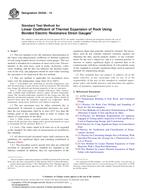
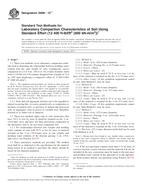 ASTM D698-12e1
ASTM D698-12e1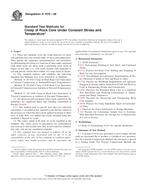 ASTM D7070-08
ASTM D7070-08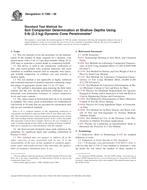 ASTM D7380-08
ASTM D7380-08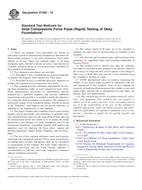 ASTM D7383-10
ASTM D7383-10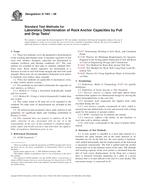 ASTM D7401-08
ASTM D7401-08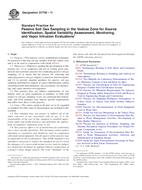 ASTM D7758-11
ASTM D7758-11
 Cookies
Cookies
